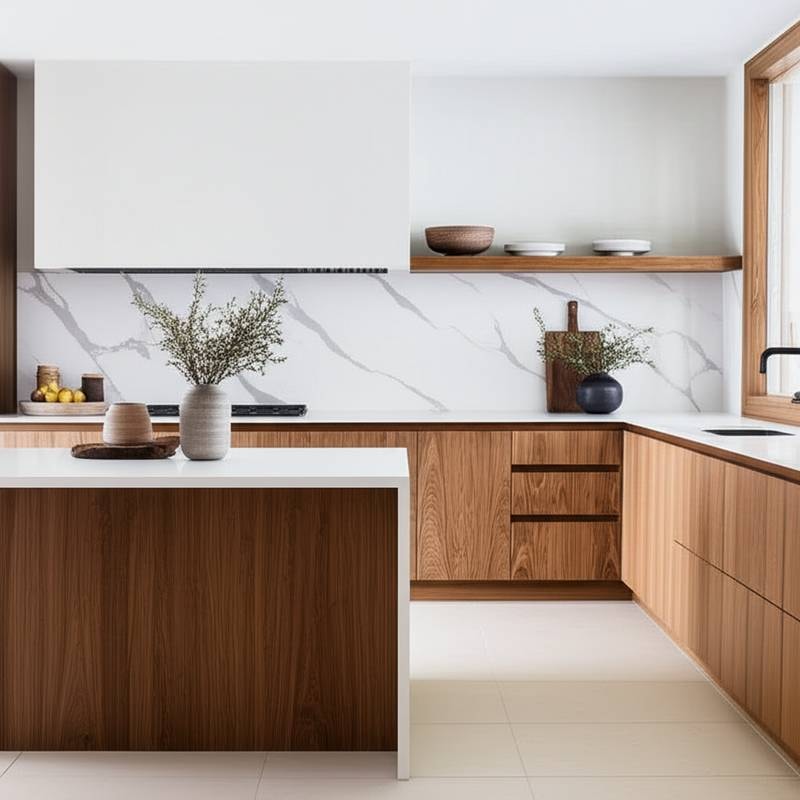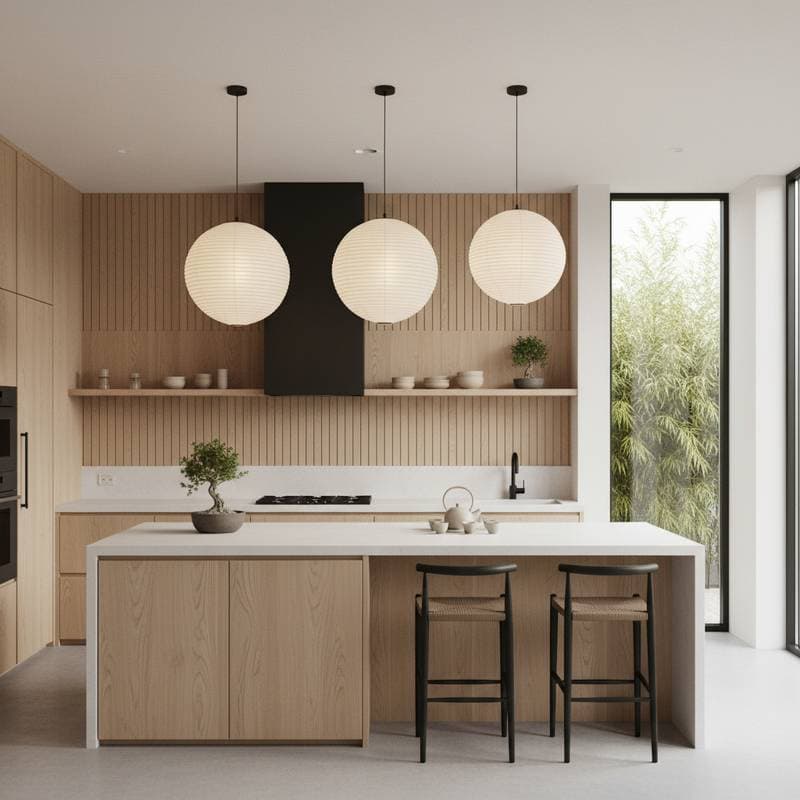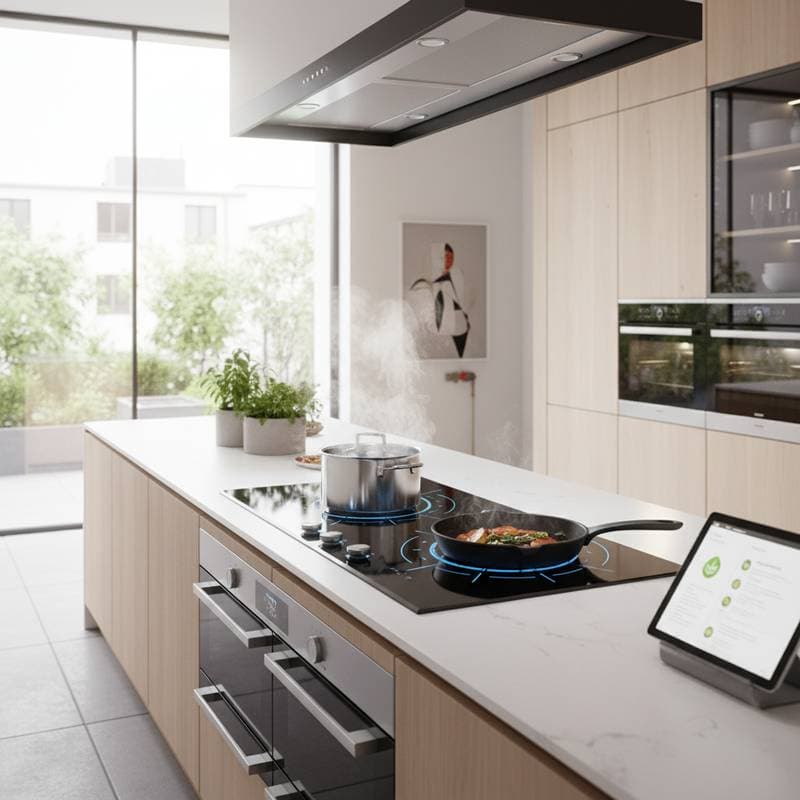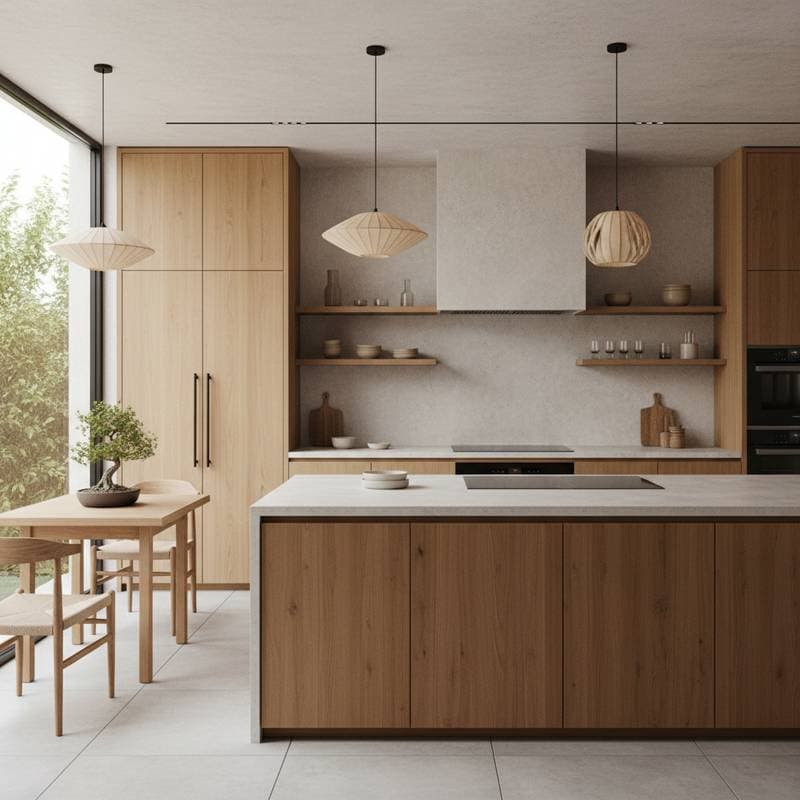The Rise of Japandi in Kitchen Design
All-white kitchens dominated design trends for years, offering a clean and modern appeal. However, Japandi design emerges as a compelling alternative, combining Japanese minimalism with Scandinavian functionality. This fusion creates spaces that feel serene and inviting, moving away from stark sterility toward warmth and texture.
Japandi kitchens prioritize natural elements and subtle elegance, making them ideal for contemporary homes. Designers note that this style resonates with those seeking balance in daily life. As a result, it gains popularity for its timeless quality.
Understanding Japandi Principles
Japandi draws from two distinct philosophies. Japanese design emphasizes simplicity, mindfulness, and harmony with nature, often using clean lines and uncluttered spaces. Scandinavian influences add coziness through soft lighting, functional forms, and warm materials.
Together, these elements form warm minimalism. Spaces avoid excess while embracing tactile experiences. The result is an environment that nurtures well-being without overwhelming the senses.
Key principles include restraint in color palettes, integration of natural materials, and focus on craftsmanship. Each choice serves a purpose, enhancing usability and aesthetic appeal. This thoughtful approach sets Japandi apart from more ornamental styles.
Why All-White Kitchens Are Fading
All-white kitchens once symbolized purity and openness, with glossy surfaces reflecting light to make rooms feel larger. Yet, this trend reveals limitations over time. Harsh lighting can make spaces feel cold, and maintenance proves challenging as fingerprints and stains appear readily.
Homeowners increasingly desire personality in their kitchens. All-white designs often lack depth, leading to a sense of uniformity that feels impersonal. In contrast, Japandi introduces variety through subtle contrasts and organic textures.
Market shifts also play a role. Surveys from design firms indicate a 40 percent rise in requests for earthy tones since 2020. This reflects broader cultural moves toward sustainability and comfort, especially post-pandemic.
Core Elements of Japandi Kitchens
Natural Materials and Textures
Wood forms the backbone of Japandi kitchens, with options like oak, walnut, or bamboo providing warmth. These materials age gracefully, developing patina that adds character. Pair them with stone countertops, such as soapstone or quartzite, for durability and subtle veining.
Textiles and ceramics add tactile interest. Linen curtains soften windows, while handmade pottery on open shelves invites interaction. Avoid synthetic finishes; opt for matte surfaces that diffuse light gently.
Muted Color Palettes
Neutral tones dominate, including soft beiges, taupes, and greiges. Accent with deeper shades like charcoal or sage green for depth. Walls in plaster or limewash enhance the organic feel, absorbing sound and light evenly.
This palette creates calm, reducing visual noise. It allows focal points, such as a wooden island, to stand out naturally. Balance ensures the space feels cohesive yet not monotonous.
Functional and Balanced Layouts
Japandi favors open layouts that promote flow. Central islands serve multiple purposes, from prep to gathering. Built-in storage hides clutter, maintaining the minimalist ethos.
Lighting layers matter: pendant fixtures in black metal provide task illumination, while recessed options ensure even distribution. Ergonomics guide decisions, with ample counter space and intuitive cabinetry.
Incorporate asymmetry for interest, like off-center shelving. This mirrors nature's imperfections, fostering a lived-in quality.
Incorporating Japandi into Your Kitchen
Start with an assessment of your current space. Identify elements to retain, such as existing cabinetry, and plan updates around them. Budget for high-impact changes like refinishing surfaces in natural hues.
- Select wood cabinetry in light finishes to brighten without overwhelming.
- Install matte black hardware for subtle contrast.
- Add greenery, such as potted herbs, to connect indoors with outdoors.
- Choose appliances in stainless steel or integrated panels to blend seamlessly.
- Layer rugs in neutral weaves for underfoot comfort.
Consult professionals for custom pieces, ensuring alignment with Japandi's emphasis on quality. Small updates, like swapping hardware, yield significant shifts. Track progress to maintain the design's integrity.
Benefits of Embracing Japandi Serenity
Japandi kitchens enhance daily routines by promoting mindfulness. Natural materials contribute to better air quality and durability, supporting sustainable living. The design's flexibility suits various home sizes, from apartments to family residences.
Resale value increases with this timeless style. Buyers appreciate spaces that feel current yet enduring. Overall, Japandi fosters a sanctuary that evolves with life stages, delivering lasting satisfaction.









